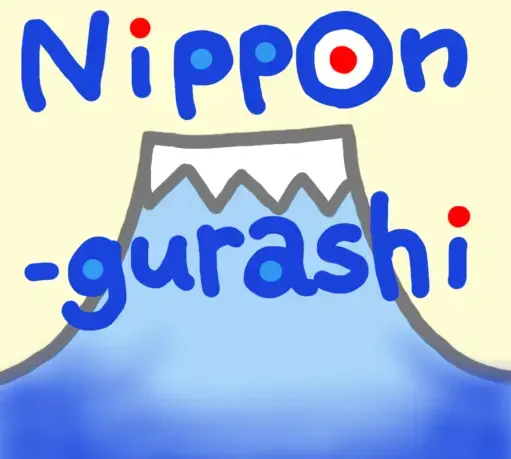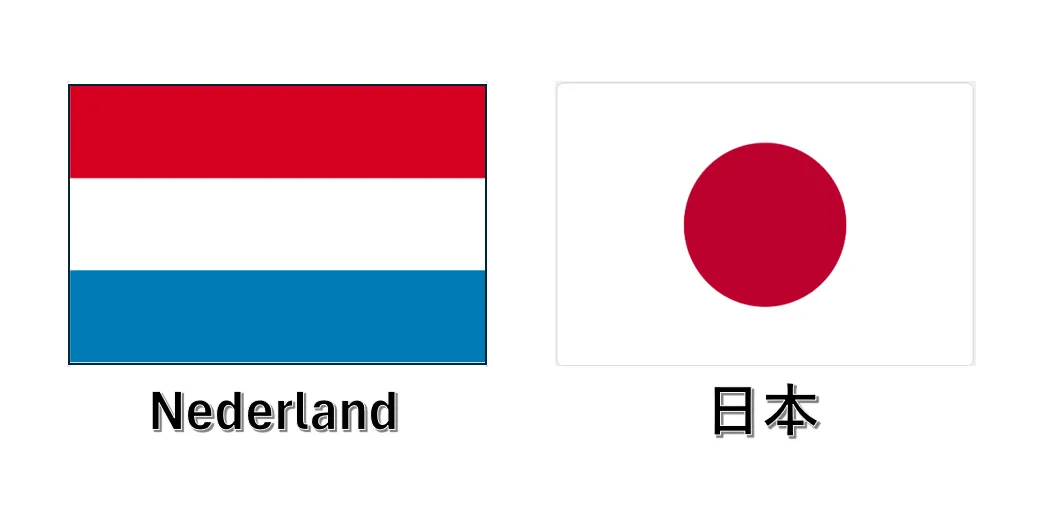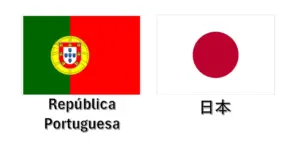Loanword (also loan word or loan-word) is a word at least partly assimilated from one language into another language through the process of borrowing. There are two different translations of “loanword” in Japanese, one is 借用語 (shakuyougo) and the other one is 外来語 (gairaigo).
If you are studying Japanese and interested in the difference between shakuyougo and gairaigo, loanwords from Portuguese to Japanese or 当て字 (ateji), please check this article first.
I’d like to talk about loanwords (gairaigo in this case) that were adopted into Japanese from Dutch and 二重語(nijūgo = doublets) this time.
(目次=Table of contents)
The Relation Between the Netherlands and Japan in the 17 th Century
Portugal was the only Western country that Japan had trading and cultural exchanges with before the relation between the Netherlands and Japan started. If you have watched the American drama called SHOGUN 将軍, you remember the story began with a stranded ship with Dutch crews and an English pilot. This event actually happened in March 1600 (around the end of the Azuchi–Momoyama period), and the actual name of the ship was De Liefde. It was the first time for Japanese people to meet the Dutch (also English) and their culture. Ieyasu Tokugawa (the first Shogun in the Edo period) gave trading permission to Jacob Quaeckernaeck, who was the captain of De Liefde. Years later, the first trading ship from Netherlands arrived at Hirado (Nagasaki prefecture in Kyushu region of Japan) in 1609.
The Edo shogunate (the military government of Japan during the Edo period) eventually stopped trading with Portugal, and they prohibited Portuguese ships from visiting Japan in 1639. After that, the Netherlands became the only Western country that the Edo shogunate allowed to do trading and have cultural exchanges with until Japan opened the country and signed treaties with the US, the Netherlands, Russia, the UK and France in 1858.
A list of Gairaigo from Dutch
You need to keep in mind that some gairaigo don’t have exact the same meaning as the original Dutch words. The English translations on the list below is for the translation of gairaigo and not for the original language.
| Dutch | Gairaigo | English translation of gairaigo |
|---|---|---|
| brandpunt | ピント (pinto) | focus(camera) |
| blik | ブリキ (buriki) | tin plate |
| extract | エキス (ekisu) | extract or essence |
| glas | ガラス*¹、硝子 (garasu) | glass (for window or material) |
| gom | ゴム (gomu) | rubber |
| inkt | インキ*² (inki) | ink |
| kabas | カバン*³、鞄 (kaban) | bag |
| koffie | コーヒー、珈琲 (kōhī) | coffee |
| kok | コック*⁴ (kokku) | cook, chef |
| kraan | カラン*⁵ (karan) | faucet, tap |
| letter | レッテル (retteru) | labeling someone with one-sided prejudices |
| mes | メス (mesu) | surgical knife, scalpel |
| marmot | モルモット (morumotto) | guinea pig |
| ontembaar | お転婆 (otenba) | tomboy |
| orgel | オルゴール (orugōru) | music box, musical box |
| pek | ペンキ (penki) | paint |
| pincet | ピンセット (pinsetto) | tweezers (not for hair) |
| pons | ポン酢、ポンズ (ponzu) | ponzu, Japanese citrus-based sauce |
| ransel | ランドセル (randoseru) | randoseru*⁶, a type of school bag for elementary school students |
| retort | レトルト (retoruto) レトルト食品 (retoruto shokuhin) | ready-made food in a sealed pouch that has 1 year or longer best before date |
| schop | スコップ*⁷ (sukoppu) | shovel or garden trowel |
| spuit | スポイト (supoito) | eye dropper, pipette |
| trap | タラップ (tarappu) | ladder, landing steps, boarding ramp |
| tinctuur | チンキ(chinki) | tincture |
| zondag | ドンタク (dontaku) 博多ドンタク (Hakata dontaku) | Hakata Dontaku Festival (a name of a festival held in Hakata, Fukuoka prefecture in Japan) |
*¹ ガラス (garasu) and グラス (gurasu)
There are two different Japanese words ガラス(garasu) and グラス(gurasu), but both of them mean “glass” in English. They are also called 二重語 (nijugo = doublets) in linguistics. Doublets are words in a given language that share the same etymological root, and they are often the result of loanwords being borrowed from other languages. ガラス(garasu) usually means glass as material and グラス(gurasu) means drinkware made of glass. It is said that ガラス(garasu) is originated with the Dutch word, “glas” and グラス(gurasu) came from the English word, “glass”.
*² インキ (inki) and インク (inku)
The word, インキ(inki) is commonly used in a printing industries, but not in a daily life. Japanese people usually use インク(inku) when they refer to ink. They are also doublets. インキ(inki) is originated from Dutch “inkt”, and インク(inku) is originated from English “ink”.
*³ カバン、鞄 (kaban)
Japanese people use the word, バッグ(baggu = bag) more often than カバン nowadays. Although both of the words カバン(kaban) and バッグ(baggu) mean bag in English, I think Japanese people tend to imagine a bag made of leather (especially for office workers) when hearing カバン(kaban). It may be confusing for English speakers, but some Japanese say バック(bakku, sounds like “back”) for a bag because of the Japanese accent.
*⁴ コック (kokku)
コック(kokku) means a person who cooks food or whose job is cooking in English. The word, シェフ(shefu = chef) is also used in Japanese. In general, コック(kokku) or 料理人(ryouri ninn) is used for common cooking workers and シェフ(shefu) is used for a head chef who gives orders to other workers. However, people use the word, 板前(itamae) instead of コック(kokku) or シェフ(shefu) at Japanese cuisine restaurants in Japan.
*⁵ カラン (karan)
I hardly hear カラン(karan) in daily conversation since the word, 蛇口(jaguchi) is commonly used for a faucet. I often see the word カラン(karan) on signs at hot springs and public baths in Japan. Apparently, カラン(karan) is also commonly used in the construction industry in Japan.
*⁶ ランドセル (randoseru)
It is a firm-sided backpack made of stitched firm leather or leather-like synthetic material, most commonly used by elementary schoolchildren in Japan. The average price of a randoseru is about 60,000 yen (approximately USD 410.96 calculated with the exchange rate USD 1 = 146 yen). It is expensive for a school bag, but a randoseru is made to be durable and elementary school students use it for six years.
*⁷ スコップ (sukoppu), シャベル (shaberu) and ショベル (shoberu)
All these three words, スコップ(sukoppu), シャベル(shaberu) and ショベル(shoberu) are the same in English, “shovel”. スコップ(sukoppu) is from Dutch, シャベル(shaberu) and ショベル(shoberu) are from English. Although シャベル(shaberu) and ショベル(shoberu) have different sounds, they mean the same in Japanese. Since シャベル(shaberu) is more commonly used, I’m using the word シャベル(shaberu) from now on. According to the definition by JIS (Japanese Industrial Standards), シャベル(shaberu) is a shovel with foot steps so that you can use your foot on it when you dig with the shovel. スコップ(sukoppu) on the other hand, is a different shaped shovel without footstep (and it is called poly scoop shovel in English).
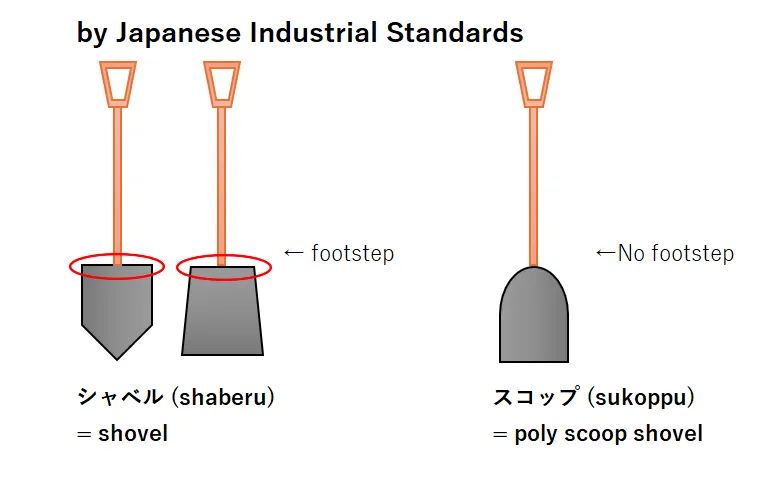
The difficult part of these gairaigo is that the definition by JIS is only for large sized not for small sized シャベル(shaberu) and スコップ(sukoppu). As a result, they mean different tools depending on the area in Japan. In West Japan, people use the word スコップ(sukoppu) for a garden trowel and シャベル(shaberu) for a large shovel. However, people in North Japan use the word シャベル(shaberu) for a garden trowel and スコップ(sukoppu) for a large shovel. In East Japan (Kanto region), they all get mixed up and people say whatever they want to use unfortunately.
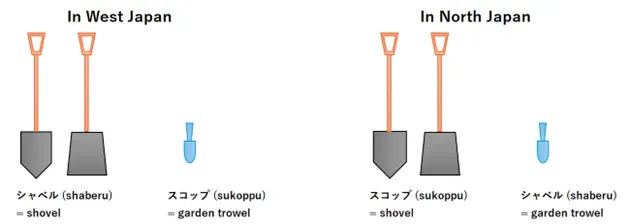
A List of Japanese words with ガラス (garasu) and グラス (gurasu)
The difference between ガラス(garasu) and グラス(gurasu) may be a little bit confusing for Japanese learners (even for native Japanese speakers sometimes). Here is a list of examples of words with ガラス(garasu) or グラス(gurasu).
| Japanese | English translation |
|---|---|
| ガラス板、板ガラス (garasu ita, ita garasu) | plate glass, flat glass, sheet glass |
| ガラス工芸 (garasu kougei) | glasswork, glass crafts |
| ガラス細工 (garasu zaiku) | glass art (especially glass figurines) |
| ガラス食器 (garasu shokki) | glassware (tableware) |
| ガラス繊維 (garasu sen i) | general term of glass fiber including glass wool and fiberglass |
| 窓ガラス (mado garasu) | plate glass for windows |
| グラス (gurasu) | glass (for drinking) |
| グラスウール (gurasu ūru) | glass wool |
| グラスファイバー (gurasu faibā) | glass fiber for Fiber Reinforced Plastics, Fiber Reinforced Thermo-plastics or etc. |
| サングラス*⁹ (san gurasu) | sun glasses |
| ステンドグラス*¹⁰ (sutendo gurasu) | stained glass |
| ビールグラス (bīru gurasu) ビアグラス (bia gurasu) | beer glass |
| ワイングラス (wain gurasu) | wine glass |
*⁸ グラスファイバー (garasu faibā)
Both 繊維(senn i) and ファイバー(faibā) mean “fiber” in English. Some people use the word, ガラスファイバー(garasu faibā) instead of グラスファイバー (gurasu faibā), but no one says グラス繊維 (gurasu sen i) instead of ガラス繊維 (garasu sen i).
*⁹ サングラス (san gurasu)
Glasses (two lenses in a frame that rests on the nose and ears) are called 眼鏡 (megane) in Japanese, and sun glasses are called サングラス (san gurasu). Although サングラス was originated from English, the sound of “es” for plural form was not imported to the Japanese word.
*¹⁰ ステンドグラス (sutendo gurasu)
In general, plate glass for windows is called 窓ガラス(mado garasu= window glass) and stained glass is called ステンドグラス(sutendo gurasu) in Japanese. Japanese people imported the English word, stained glass as one word, so that ステンドグラス (sutendo gurasu) which has closer pronunciations with English is commonly used. There are a few people use ステンドガラス(sutendo garasu) instead of ステンドグラス(sutendo gurasu).
Examples of Doublets in Japanese
As I mentioned above, doublets are called 二重語(nijūgo) in Japanese. It sounds like 二十五(nijūgo = the number, twenty five), but they are different words with different accents. 二重(nijū) literally means double or dual, and 語(go) means word, term or language. There are tons of doublets in Japanese if we also count 漢語(kango = words from Early Middle Chinese) in it, but Japanese doublets that have their origin from Western languages are not so many. Here is the list of doublets written in katakana for Japanese learners.
| No. | Gairaigo | Original language | English translation of gairaigo |
|---|---|---|---|
| 1-a | アイアン (aian) | iron (English) | golf club whose head part is made of iron or steel |
| 1-b | アイロン (airon) | iron (English) | clothes iron |
| 2-a | ガラス (garasu) | glas (Dutch) | glass as material or for a window |
| 2-b | グラス (gurasu) | glass (English) | glass as drinkware |
| 3-a | カラメル (karameru) カラメルソース (karameru sōsu) | caramel (French) | caramel sauce (made of sugar and water) |
| 3-b | キャラメル (kyarameru) キャラメルソース (kyarameru sōsu) | caramel (English) | caramel candy, caramel sauce (made of sugar and heavy cream or butter) |
| 4-a | コップ (koppu) | copo (Portuguese) or kop (Dutch) | cup without a handle |
| 4-b | カップ (kappu) | cup (English) | cup with a handle |
| 5-a | スティック (sutikku) | stick (English) | a thin piece of wood or plastic, or a shape of long and narrow |
| 5-b | ステッキ (sutekki) | stick (English) | magical girl wand in anime mainly for girls or Western style walking stick or cane |
| 6-a | ストライク*¹¹ (sutoraiku) | strike (English) | strike in baseball |
| 6-b | ストライキ (sutoraiki) | strike (English) | strike of workers |
| 7-a | ピザ (piza) | pizza (English) | general term of pizza or American style pizza (thick dough and a lot of toppings) |
| 7-b | ピッツァ (pittsua) | pizza (Italian) | Italian style pizza (thin dough and simple toppings) |
| 8-a | ミシン (mishin) | machine (English) | sewing machine |
| 8-b | マシン (mashin) マシーン (mashīn) | machine (English) | machine in general |
| 9-a | モバイル (mobairu) | mobile(English) | used as an adjective for portable devices*¹² |
| 9-b | モビール (mobīru) | mobile (French) | baby mobile |
*¹¹ ストライク(sutoraiku)
ストライク(sutoraiku) is also the same as the original name of the Pokémon called Scyther in English.
*¹² モバイル (mobairu)
Examples: モバイルバッテリー (mobaru batterī = mobile battery) or モバイルWi-Fi (mobairu wai-fai = mobile wi-fi router )
References
National Diet Library Japan (in Japanese) https://www.ndl.go.jp/nichiran/s1/s1_1.html
